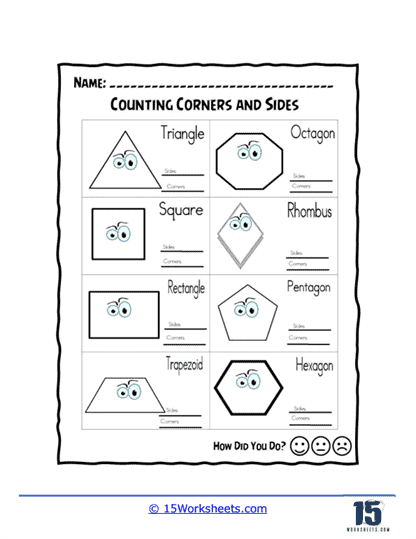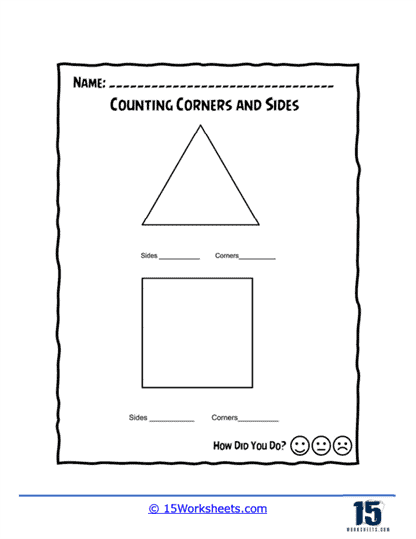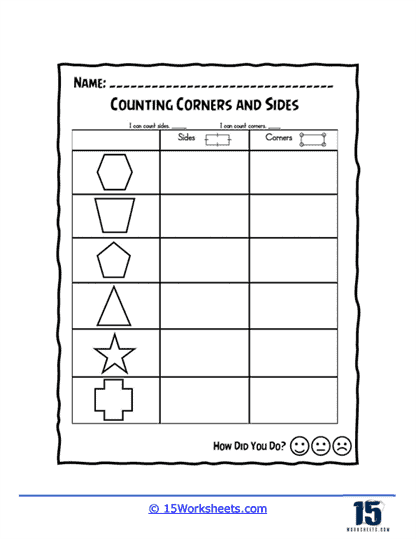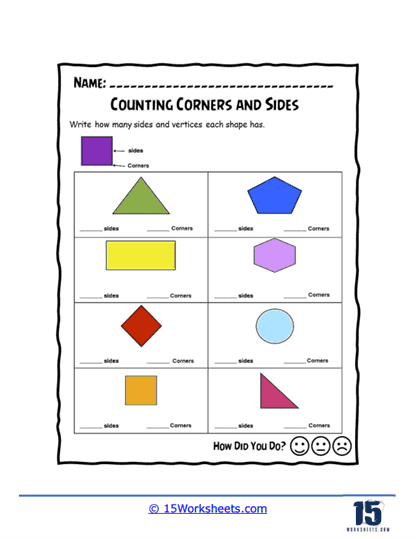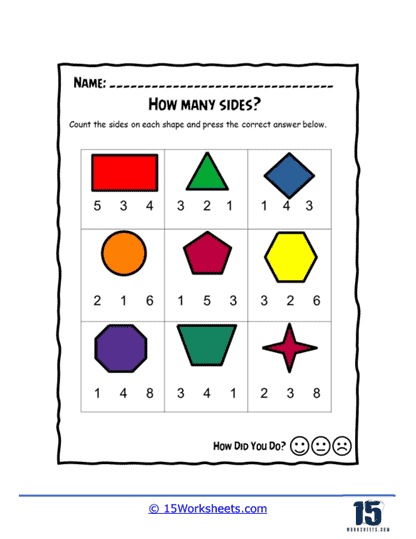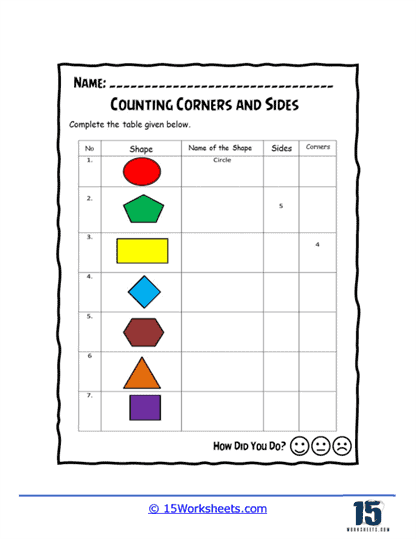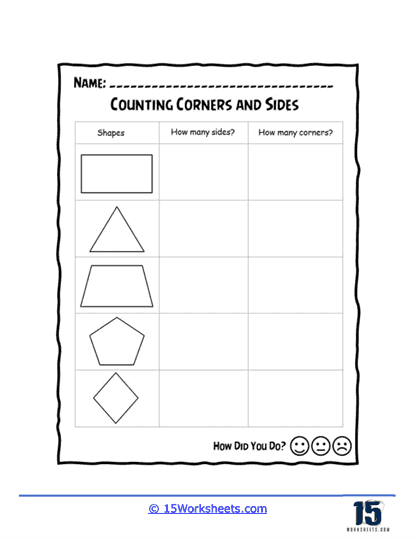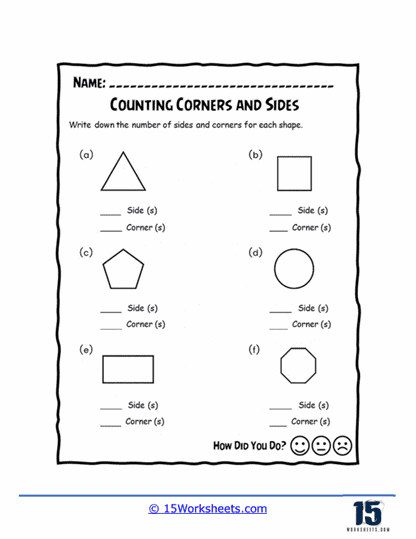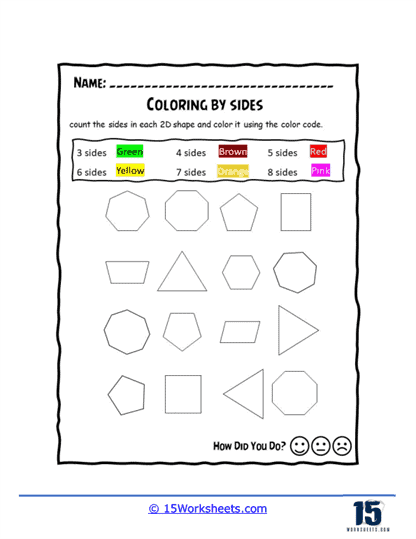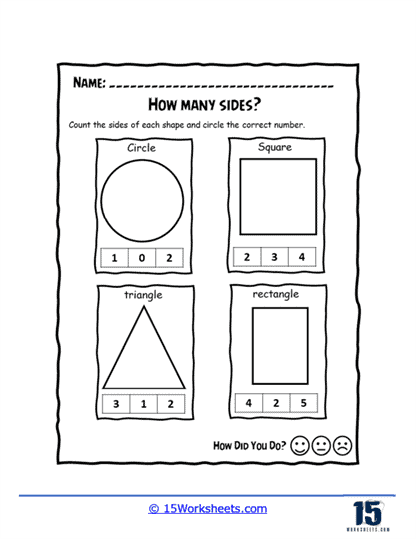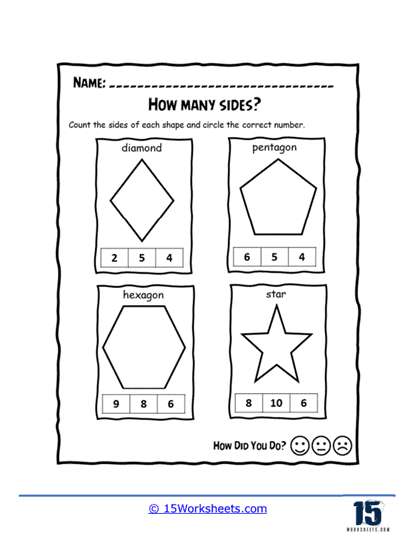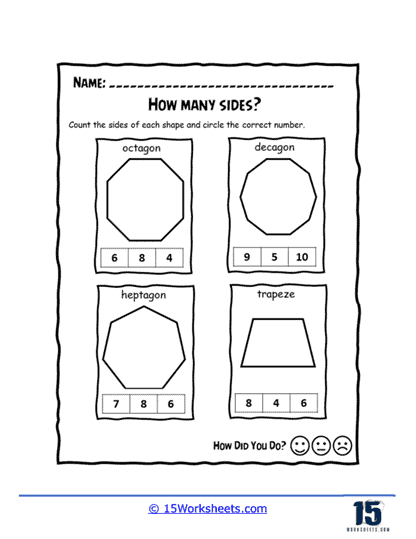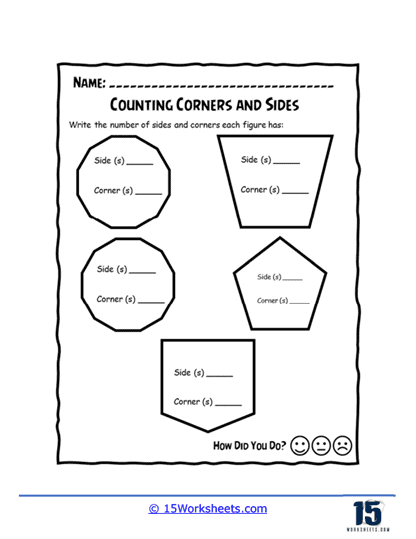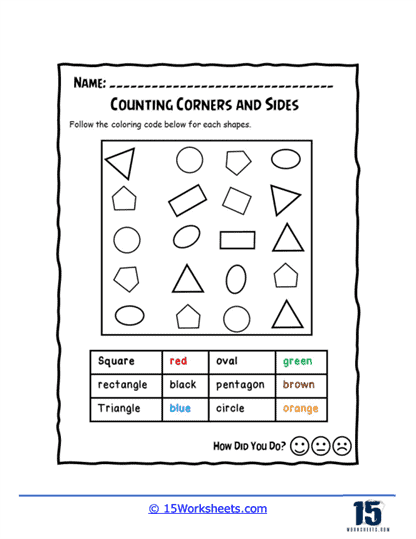Counting Corners Worksheets
All About These 15 Worksheets
Preschool is a crucial stage in a child’s development where they begin to explore the world of numbers, shapes, and basic mathematical concepts. Introducing preschoolers to Counting Corners worksheets offers an engaging and interactive way for caregivers, parents, and educators to nurture early math skills while promoting exploration and play. This collection of Counting Corners worksheets provides a valuable resource that encourages young learners to count, identify, and engage with the corners of shapes, fostering a foundation for mathematical understanding and problem-solving.
What Are Counting Corners Worksheets?
Counting corners worksheets were designed to help young children practice counting the corners (or vertices) of various shapes. These worksheets are used in early childhood education, such as preschool or kindergarten, to help children develop their counting skills, shape recognition, and understanding of geometric properties.
Counting corners worksheets often include the following activities:
Identification – Worksheets may feature a mix of shapes, and children are asked to identify the number of corners each shape has. This helps them recognize different shapes and understand the concept of corners or vertices.
Comparing Shapes – Children might be asked to group or compare shapes based on the number of corners they have, reinforcing their understanding of shape properties and practicing their sorting and comparison skills.
Tracing Shapes – Worksheets may require children to trace the outline of various shapes and then count the corners, helping them develop fine motor skills while practicing counting and shape recognition.
Drawing Shapes – In some activities, children may be asked to draw a shape that has a certain number of corners, promoting creativity and reinforcing the concept of corners and shape properties.
Counting corners worksheets can be a valuable tool for teachers and parents to help young children develop their counting skills, shape recognition, and understanding of basic geometric properties.
Shapes have different numbers of sides and corners (also called vertices) depending on their type. Here are some common shapes and their corresponding number of sides and corners:
- Triangle – A triangle has 3 sides and 3 corners.
- Quadrilateral – A quadrilateral has 4 sides and 4 corners. Some common examples include squares, rectangles, parallelograms, trapezoids, and rhombuses.
- Pentagon – A pentagon has 5 sides and 5 corners.
- Hexagon – A hexagon has 6 sides and 6 corners.
- Heptagon – A heptagon has 7 sides and 7 corners.
- Octagon – An octagon has 8 sides and 8 corners.
- Nonagon – A nonagon has 9 sides and 9 corners.
- Decagon – A decagon has 10 sides and 10 corners.
As the number of sides in a polygon increases, so does the number of corners. In general, a polygon with ‘n’ sides will have ‘n’ corners. It’s important to note that the shapes mentioned above are all examples of polygons, which are closed, two-dimensional figures with straight sides. There are also non-polygon shapes with curved sides, like circles and ellipses, which do not have a fixed number of sides or corners.
Counting corners involves logical thinking and problem-solving. Children need to analyze the shape, identify the corners, and count them accurately. This process encourages critical thinking, attention to detail, and the ability to apply mathematical concepts to solve a specific task. It provides a solid starting point for children to explore geometry, understand numerical relationships, and develop problem-solving skills.
Benefits to Preschoolers
This collection of Counting Corners worksheets offers numerous benefits to preschool students:
- Early Math Skills: Engaging with counting and corner recognition activities fosters early math skills, including number sense, counting, and basic geometry.
- Critical Thinking: Counting corners encourages critical thinking as children analyze shapes, count corners, and apply mathematical reasoning.
- Shape Recognition: Worksheets promote shape recognition skills as children identify and interact with various shapes and their corners.
- Fine Motor Skills: Completing counting-related activities enhances fine motor skills, hand-eye coordination, and dexterity, preparing children for tasks like writing and drawing.
- Playful Learning: Counting Corners worksheets make learning enjoyable and playful, promoting a positive attitude towards math and exploration.
This collection of Counting Corners worksheets for preschoolers serves as a valuable educational tool that introduces young learners to fundamental mathematical concepts in a playful and interactive way. These worksheets promote early math skills, critical thinking, and shape recognition while enhancing fine motor development.
Additionally, they lay the foundation for more complex mathematical concepts in the future, preparing children for academic success. By incorporating these worksheets into early education, caregivers, parents, and educators can inspire a love for math, stimulate critical thinking, and nurture the early math skills of preschoolers, setting them on a path to mathematical proficiency and lifelong learning.

